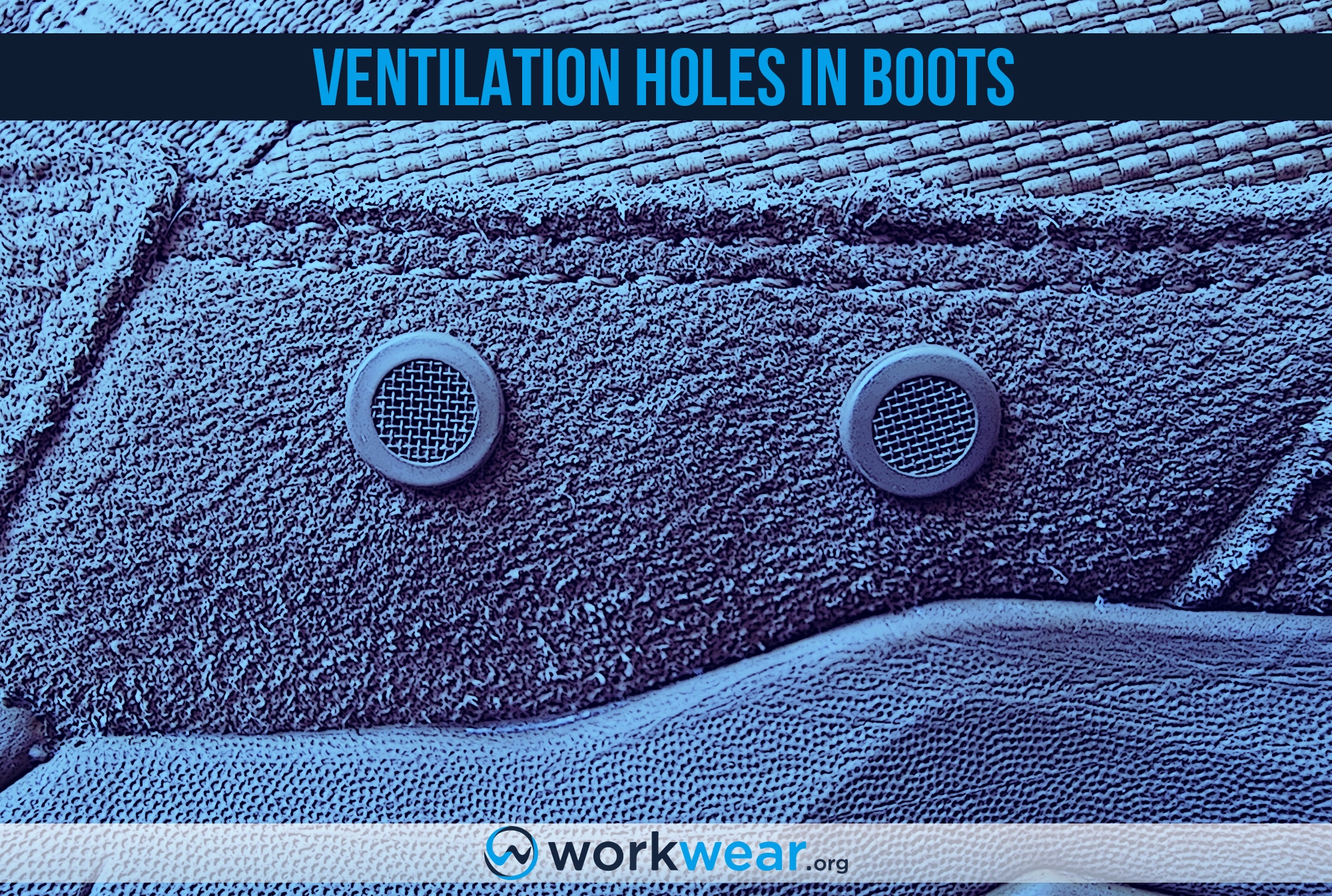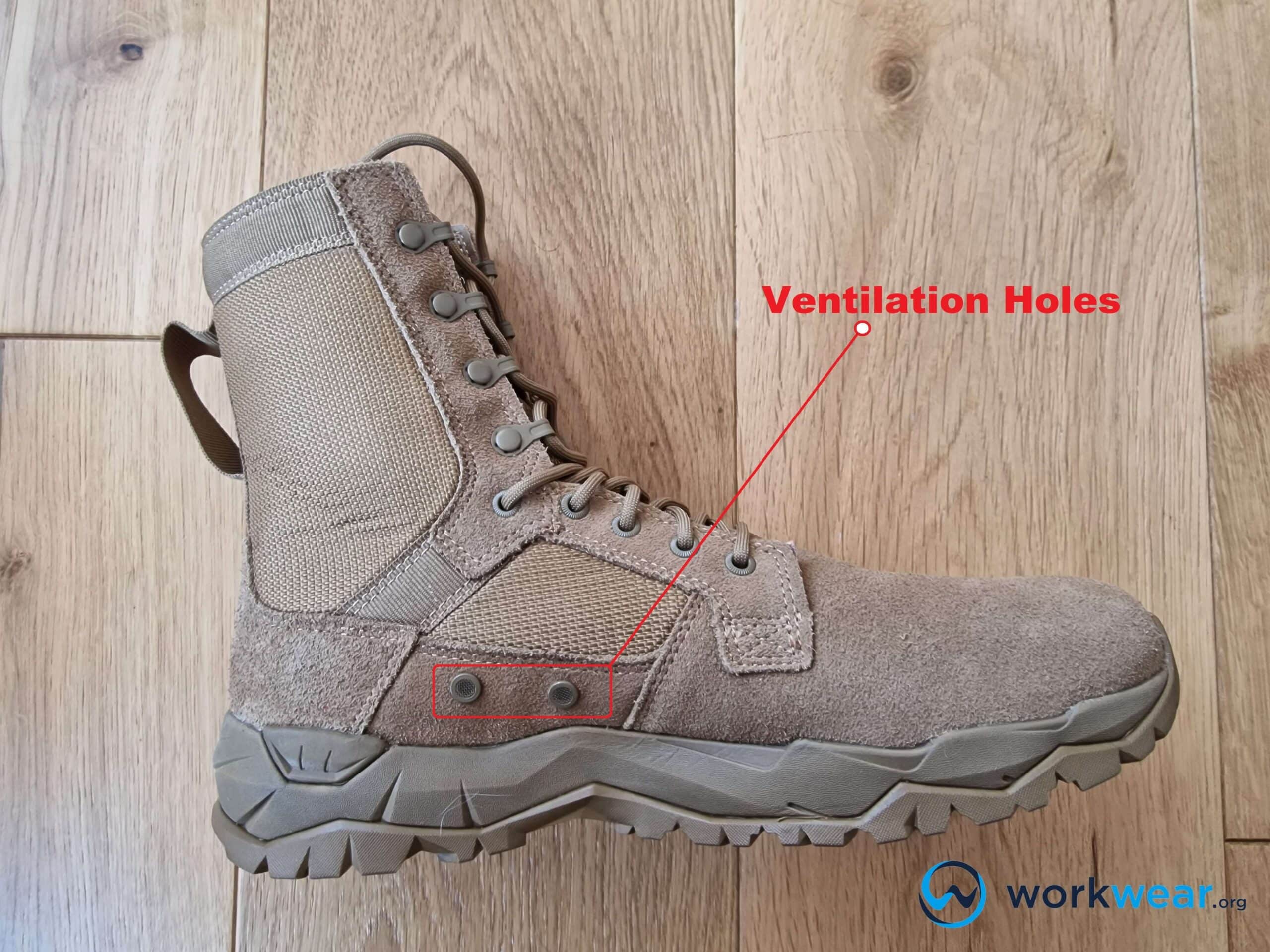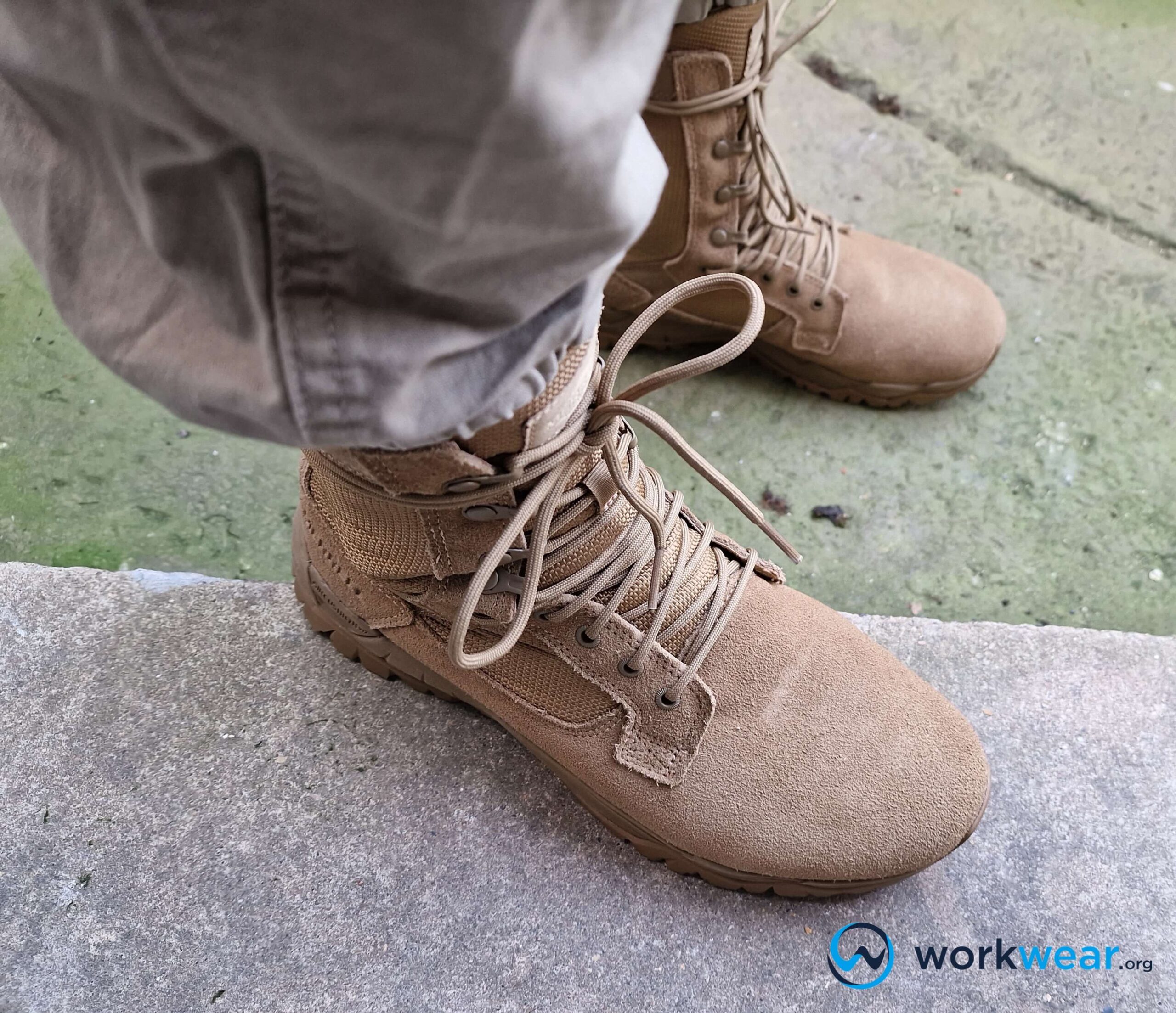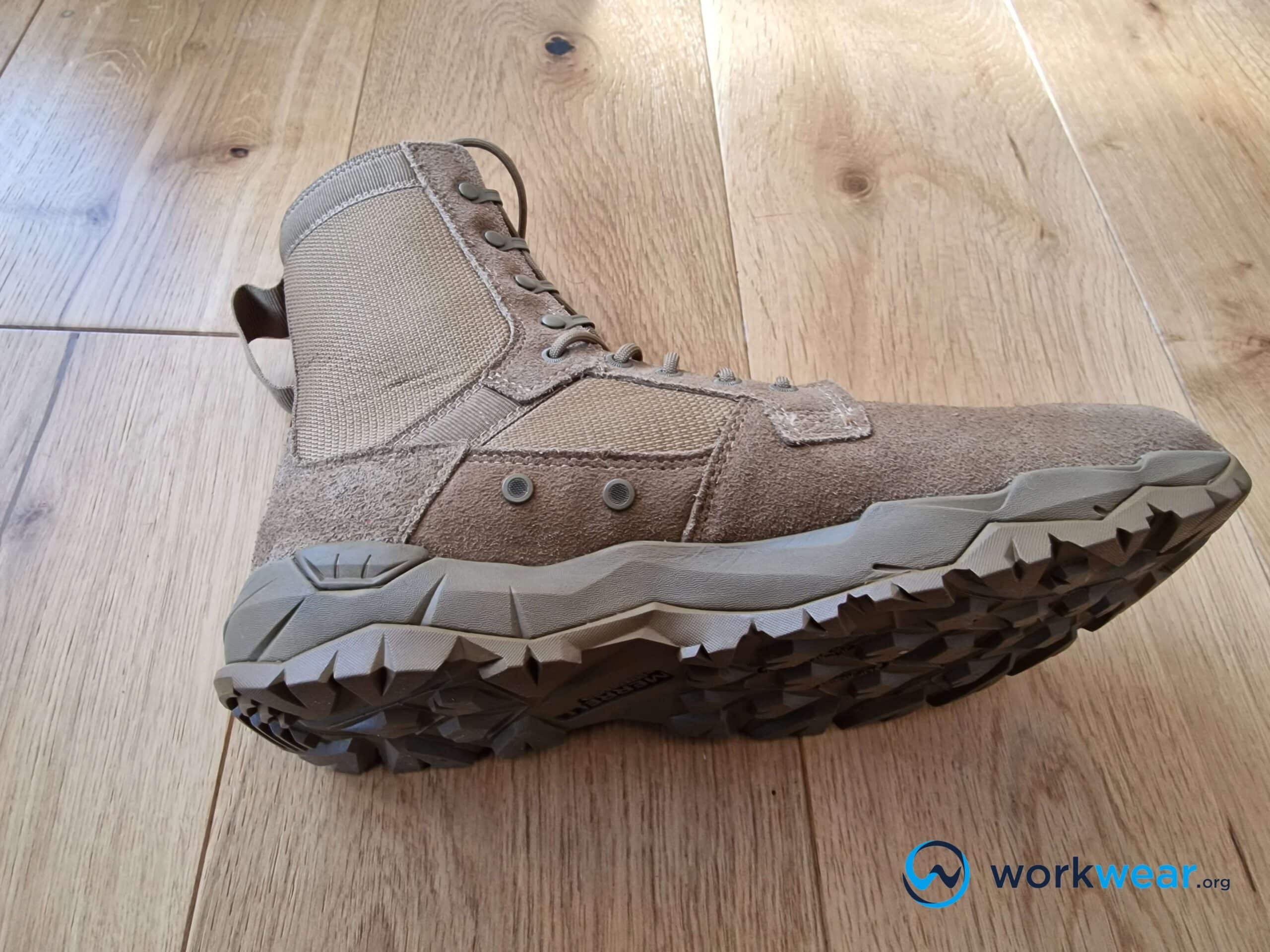What are Ventilation Holes in Boots?

One of the aspects that makes boots comfortable to wear is breathability. No matter how thickly cushioned work boots are, they won’t stay comfy throughout the day if they heat up quickly. The good news is work boots can feel a lot cooler for much longer if they’re built with additional features – including ventilation holes. Do you want to know more about these breather holes and their importance in work boots? Don’t worry; I’m here to give helpful details to help you better appreciate these tiny openings in your boots.
What are Ventilation Holes?
Ventilation holes are the small round openings built into work boots to help with air circulation.
These holes can be seen in different work boots, especially tall tactical boots worn in warm weather conditions.
Also called breather holes, these openings are fitted into boots to keep the interiors properly ventilated throughout the day. They can significantly increase foot comfort by preventing overheating when the boots are worn for long periods.
It’s worth noting that ventilation holes can allow liquids to come in, so they’re not built into waterproof boots.
Where Can You See Ventilation Holes in Work Boots?
Ventilation holes in work boots are often discreetly placed. You may not notice them, but they work hard to keep more air flowing in and help moisture escape for improved ventilation inside the boots.
They’re typically set on top or the sides of work boots, blending in with the other uppers’ designs for a seamless look.
They can be simple holes out of the upper’s structure, but most are reinforced with a sturdier material (such as hard plastic or metal) that mak, which makes them look like eyelets.
Advantages of Ventilation Holes
Encourage more air to come in
Work boots with ventilation holes allow more air to get in. Work boots are typically made with thick, sturdy materials that don’t easily let air in if they don’t have small openings that can let the feet breathe.
Ventilation holes are crucial features that make footwear much more breathable, especially in hot or humid work areas.
Allow moisture to disperse quickly
Ventilation holes welcome more air and allow moisture to escape inside footwear. Thus, sweat can easily evaporate through ventilation holes instead of building up inside work boots.
This can stop sweat from building up inside the boots, helping keep the feet dry even with all-day boot use while walking nonstop or doing strenuous activities.
Boot interiors feel cool and fresh for much longer
With more air encouraged, work boots with ventilation holes typically stay fresh and cool for longer compared to footwear without these small openings.
This helps protect the feet from feeling overheated while using the boots in high-temperature or humid conditions.
The feet stay comfortably dry, and sweat easily disperses through the breather holes instead of pooling inside the boots all day.
Help keep the feet comfortable in warm environments
Breathability in work boots is crucial to keep the feet comfortable. This becomes even more important when working in warm environments. Tall boots, such as tactical boots with 8-inch heights or taller, are typically designed with ventilation holes to keep the feet comfortable.
The feet stay comfortable and dry even in hot or humid surroundings because the breather holes let fresh air come in and encourage moisture dissipation throughout the day.
Can prevent bacterial growth
Ventilation holes can help prevent the inside of boots from becoming a breeding ground for bacteria. Boot interiors that are constantly damp encourage bacterial growth, especially if they are not cleaned regularly.
Breather holes keep the air flowing freely to help dry out the interior, preventing the moisture that encourages bacteria to multiply.
They also help sweat evaporate so the boot interiors don’t stay damp for a long time.
Can protect against foot odor and skin problems
Ventilation holes prevent bacterial growth and protect the feet against health issues.
They can keep the feet dry throughout the day, so sweat can’t accumulate even while walking in warm climates.
Maintaining a dry environment will go a long way in preventing odor development as the feet stay comfortable and protected against bacterial growth.
As ventilation holes help sustain comfortably dry feet, they can also protect the skin against irritation and infections caused by bacterial growth.
Disadvantages of Work Boots with Ventilation Holes
Liquids can easily seep in
Ventilation holes may be small, but they’re still openings where liquids can seep into the upper structure. They break the solid construction of study upper materials, forming spaces where water and other wet elements can enter.
Work boots with ventilation holes are unsuitable for wet environments because they won’t protect the feet from being uncomfortably soaked.
Compromise the waterproofness of work boots
There’s a reason ventilation holes are not typically seen in waterproof boots. Breather holes compromise the boots’ waterproofness, even if the uppers are made with waterproof materials.
Liquids can creep in through these small openings, so the feet are at risk of being soaked while working in wet settings.
Can be weak points on the upper’s structures
Ventilation holes are crucial for breathability but can weaken the upper’s construction. This is especially true if the holes aren’t reinforced with sturdy materials.
The openings form a break in the upper’s solid structure and can be the starting point of damage if they start to break apart or if they catch onto objects in the surrounding area.
Small critters and debris can enter through the holes
Liquids aren’t the only elements that can enter work boots via ventilation holes.
Insects and debris can also creep into the boots through the small openings.
This can be a significant issue when working outdoors and in other environments where small objects and pests are around, just waiting to inch their way into work boots.
Comparison table
| Pros | Cons | |
| Ventilation Holes | · Allow more air to get inside the boots
· Quicker moisture evaporation · Can keep the feet cool and fresh for longer · Enhanced foot comfort in warm settings · Can stop bacterial growth · Can prevent foot odor and skin problems
|
· Can let liquids in
· Reduce the waterproofness of work boots · Can be starting points of breakage on the uppers · Small insects and debris can enter through the holes |
Personal Testing Experience
Let’s look at my experiences using a pair of high-quality tactical with ventilation holes. The Merrell MQC 2 Tactical Boot had a surprisingly lightweight design, making walking and standing for hours more manageable. This 8.5-inch tactical boot had ventilation holes on one side, so it didn’t get too warm even with the tall design. It featured the Merrell Air Cushion technology that gave the heel section a foamy softness and took on the role of shock absorber. The flexible sole moved with my steps for better comfort and agility on the field. However, since this boot isn’t waterproof, it’s unsuitable for wet environments.
Conclusion
Ventilation holes effectively sustain work boot breathability in warm conditions. They may not be the most obvious features when you look at work boots, but they work hard to keep feet comfortable in high-temperature or humid environments. They welcome more air to ventilate the boot interiors and encourage sweat to escape quickly. It should be mentioned that these holes can also let liquids and debris in, making work boots with ventilation holes unsuitable for wet settings.
FAQ's
- Are ventilation holes solely responsible for work boots’ breathability?
- No. Other components, including mesh uppers, moisture-wicking linings, and open-celled foam insoles, make work boots breathable.
- Do leather work boots come with ventilation holes?
- Leather work boots typically have tiny perforations instead of larger ventilation holes. This protects the leather structure from being compromised by larger holes punched into the uppers.
- Do insulated tactical boots have ventilation holes?
- No, ventilation holes are not typically built into insulated boots. The holes can allow cold air, reducing the comfortable warmth trapped inside to keep the feet comfortable in cold environments.
- Are ventilation holes only for tall work boots?
- No, ventilation holes can also be built into shorter work boots and shoes to keep them breathable and comfortable in warm surroundings.





